Milan: What drives the “motor” city?
For decades, Milan has been regarded as an area which drives industry and is widely considered to be one of the four ‘motor’ cities of Europe. But what are the most significant factors to have ‘fuelled’ this image and shaped the city’s architecture? For me, there are four key influences: people, politics, commerce and place.
People: Giuseppe Terragni and Pietro Lingeri (1935)
From 1933, the two collaborated on Casa Rustici, a building which is now seen as the archetypal apartment block of Milan. Located on the city’s main avenue, Corso Sempione, the building originally consisted of two separate volumes until the architects joined both sections together with a series of balconies and fashioned a permeable façade. These alterations resulted in communal areas, such as an inner courtyard, which were unique in Milan at the time. The apartments were still affordable to the masses, but this new structure enabled tenants to connect.
Their work needs to be viewed with historical context, as both Terragni and Lingeri were influenced by the reorientation of Italian design during the reign of Benito Mussolini (1925–1943), which saw a shift away from progressive and functional architecture and towards the Palazzo spirit and style. Their unmissable use of white marble and the striking grid of pillars and walls throughout the Casa Rustici personifies Italian aspirations at the time. By alluding to the monumentality of buildings erected in imperial Rome, the design equated the new regime with the prestige and wealth of a bygone era.
Politics: Museo del Novecento, Giovanni Muzio and Piero Portaluppi (1935)
I love this building with a passion.
Housed within the Palazzo dell’Arengario, the Museo del Novecento (Museum of the 20th century) is another example of rationalist architecture under the reign of Fascism, built as an ode to the powerful and industrial idealisations of Italy. The building served as a local seat of office for Mussolini’s government.
Overlooking the white marble masterpiece that is the Piazza del Duomo (Cathedral Square), the building pops its head into the quintessentially renaissance square and challenges the Duomo’s authority – upon entering the square, one feels as though the museum is the unwelcome guest.
Commerce: The Pirelli Tower (1958)
Built by architect Gio Ponti and engineer Pier Luigi Nervi, the tower is affectionately known as “Il Pirellone” (The Big Pirelli). The tower was commissioned by Pirelli on the site of their original factory and, at 127 meters, it stood tall over traditional buildings right up until 1995. Abandoning the customary block form, the tower is bold and angular in structure, with refined facades and tapered sides that evoke the grandeur of a seafaring ship.
At the time of construction, post-war Milan was at odds with much of the rest of Europe, experiencing rapid economic recovery and establishing itself as a city of serious commerce. Thought to have inspired the PanAm building in New York, the Pirelli Tower became a national symbol of pride in Italy.
Place: 10 Corso Como (1991)
Dubbed the “beginning of total shopping”, this gallery isn’t a celebration of architecture – it’s about curation. Over 250 exhibitions offer a perfect selection of photography, design and fashion. Visitors are also drawn to look at art in a calm courtyard which appears out of nowhere, as if accidental – in reality, it’s been composed by the hand of a master.
With its popularity continuing to grow since the 90’s, Kris Ruhs’ 10 Corso Como is regarded as a cultural hub, with subsequent stores cropping up in Seoul, Shanghai, Beijing and New York. The site of the original store, Puerta Nueva, is understandably emerging in 10 Corso Como’s wake, propelling regeneration.
Place: Fondazione Prada OMA (2018)
This building personifies the post-war evolution in people, politics, commerce and place. The recently completed Fondazione Prada OMA is located at the southern edge of Milan on a former gin distillery dating from 1910, coexisting with industrial buildings which surround a large courtyard. In 1913, the retail mega-brand was born in Milan, where founder Mario Prada was a leather-goods craftsman.
The company’s new home is a modern palace, created through the reconfiguration of the old contrasted with the new. For me, this building reads like a magnificent abstract painting – in the same way that Picasso painted over an old newspaper, OMA paints gold over a historic industrial building. They contrast extreme contemporary forms with the familiarity of the historic buildings, creating a powerful dichotomy.
Milan is an extraordinary place, not least in terms of its colourful historical past. All of these buildings possess a strong, specifically Milanese sense of design, and they could only ever exist in this city of resolute and inherent industriousness.





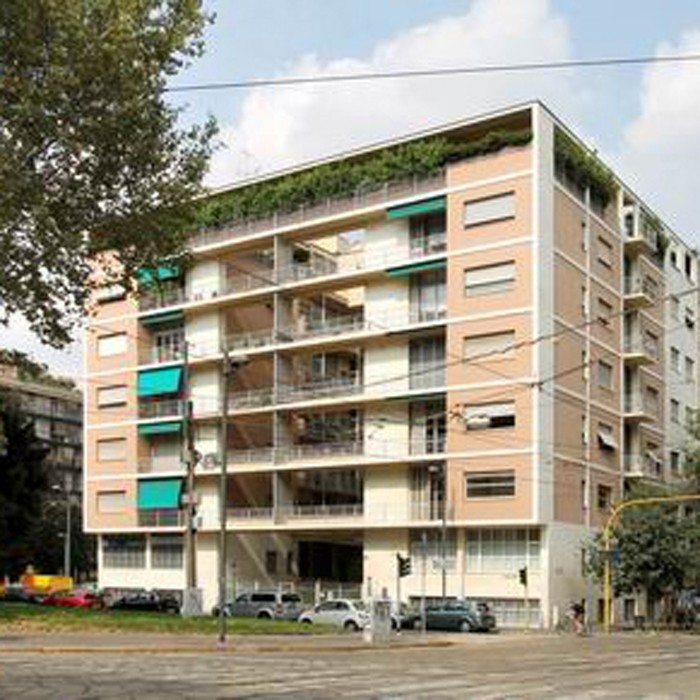
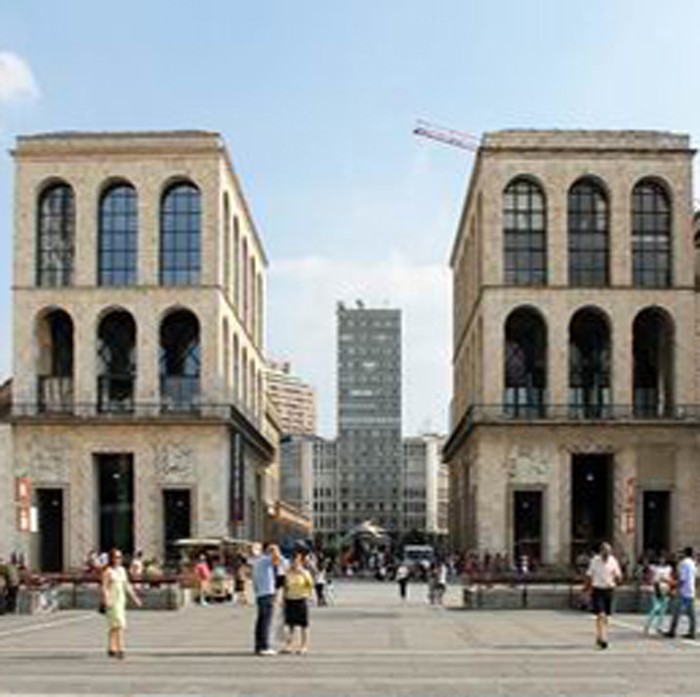
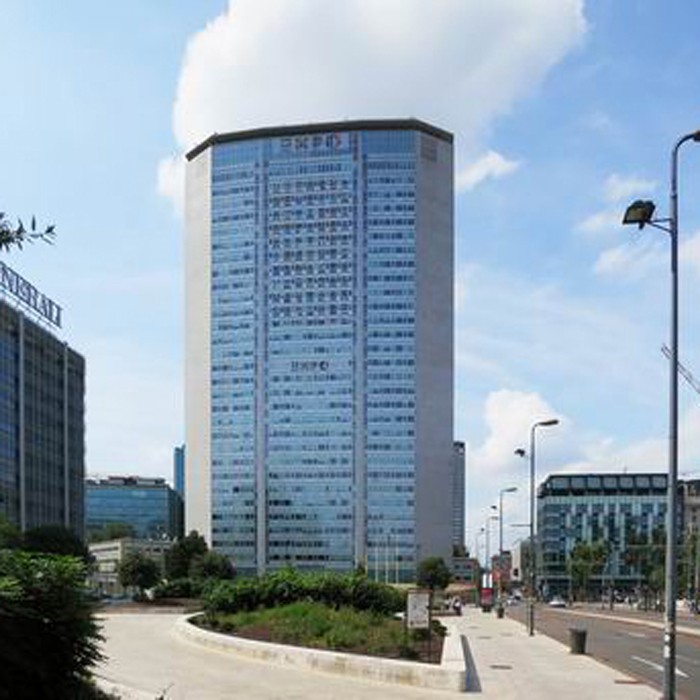
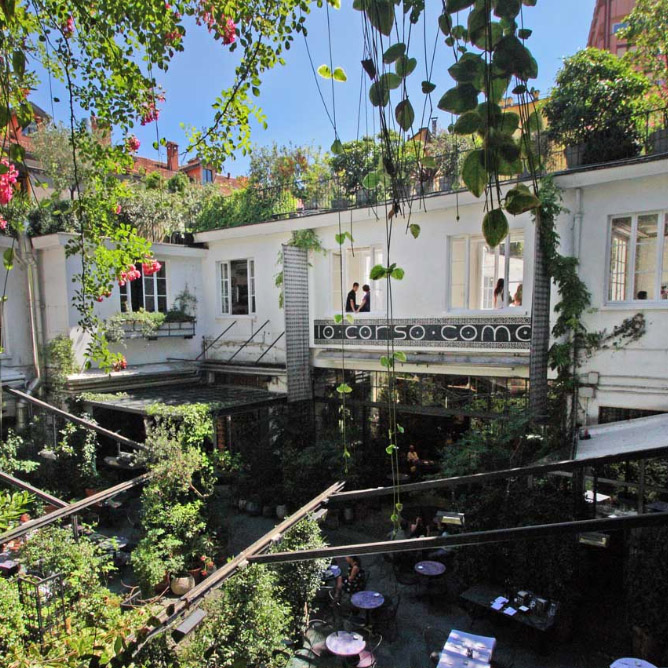
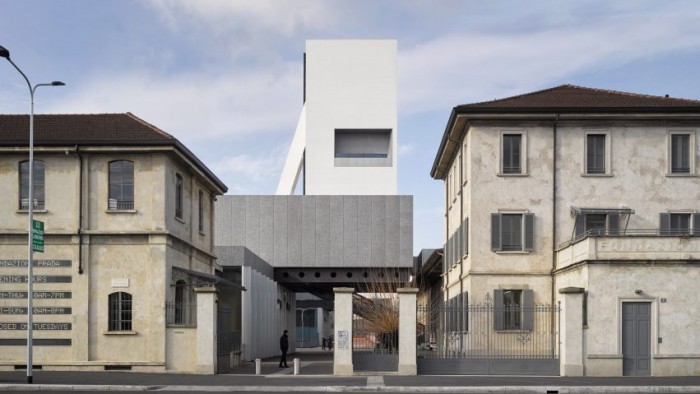
Comments
Despite visiting Milan on business many times over the past 30 years, I only recently visited as a tourist and discovered a lively, interesting, permeable city.
In a week when Italy was thrown into political turmoil and questions raised about national debt, my experience on the ground was that somehow, the Municipality of Milan works. Public spaces are well kept and since my last visit, Milan has embraced sustainable transport in a big way. Although they have run a great tram network for 100 years, new cycle lanes have been installed and roads cut off to cars. In addition, various bicycle loan schemes are in operation along with a range of car sharing services, many of them electric.
These measures all help in creating better public space to be outside, socialising and dining.
Obviously the climate helps, but there is much we can learn from Italian Urbanism and how it facilitates living.